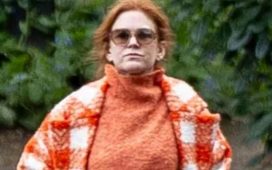Aqualung delivers a consistent tone. Sometimes the songs fluctuate between soft acoustic and hard rock, other times the individual pieces grow through progressive layering. The harder and more social pieces employ metric modulation, and the religious ones dabble in the chordal modulations of spiritual music. The acoustic songs are less folk than singer-songwriter stylings. The album revels in its contrasts. We get riff-rock ready-made for Madison Square Garden, and intimate nylon string fingerings to burn toast to.
Ian Anderson’s lyrics are filled with rich, detailed imagery, regardless of how pretentious critic Robert Christgau found him. The band mix progressive rock, hard rock, folk music, jazz, classical, and even medieval and pagan music, along with what Anderson would call “ugly changes of time signature and banal instrumental passages” on the Thick as a Brick album notes.
This Was
Jethro Tull formed in 1967, the same year Anderson took up the flute, on a whim. After realizing as a guitarist, he “was never going to be as good as Eric Clapton,” Ian “parted company with my Fender Strat, whose previous owner was Lemmy Kilmister, who was then the rhythm guitar player for the Rockin’ Vickers,” Anderson told Classic Rock. He then “bought a flute, for no good reason. It just looked nice and shiny.” Energized by Pink Floyd’s The Piper At The Gates Of Dawn and The Beatles’ Sgt. Pepper, the band was able to drop the twelve-bar blues songs which led to non-pop record deals in London.
Anderson got the name Jethro Tull from the 18th-century agriculturist who invented the seed-drill, which gave birth to modern agriculture. Their first album, This Was, was blues, but the band distinguished itself, especially live. They were the first band to perform at The Rolling Stones’ Rock and Roll Circus, though their part was mimed, with Black Sabbath’s Tony Iommi on guitar. Martin Barre took over for the band’s original guitarist, blues specialist Mick Abrahams, and on their 1969 album, Stand Up, the band stood out, sounding unlike any other band. It was eclectic, incorporating Western classical, Asian music, English folk, and harder rock. The band continued experimenting melodically and rhythmically through 1970’s Benefit, which just failed to make the U.S. Top 10.
Jethro Tull has become known as a band of ever-changing instrumentalists. Aqualung was the bridge album towards reassembling one of Ian’s first bands. Anderson was 23 when he led Jethro Tull through Aqualung. When he was young, Anderson could be found in Dunfermline, Scotland, where he was born on August 10, 1947. But he was packed off to school in Blackpool, where he sang and played guitar and harmonica for The Blades in 1963. John Evans, who joined on piano, organ, and mellotron, had been a guest musician on Benefit. Jeffrey Hammond-Hammond, who’d been mythologized in the songs “Jeffrey Goes to Leicester Square,” “Song for Jeffrey,” and “For Micheal Collins, Jeffrey And Me,” replaced Glenn Cornick on bass. Both had been in the Blades. Barriemore Barlow, also from the early sixties band, would replace Clive Bunker on drums after Aqualung.
Tull mythology says Hammond-Hammond didn’t know the instrument and had to be taught on a note-by-note basis. He may very well have had to have been coached through each specific part he was playing. They are often incredibly intricate runs, and often go against the grain of what is expected from the bass. He had to have been familiar enough with the instrument to click in with both Clive Bunker and Barriemore Barlow, each were virtuosos with vastly different approaches to rhythm. Bunker never met a beat he couldn’t undermine for unexpected force and dynamic. Yet, he could make a 5/4 song danceable.













